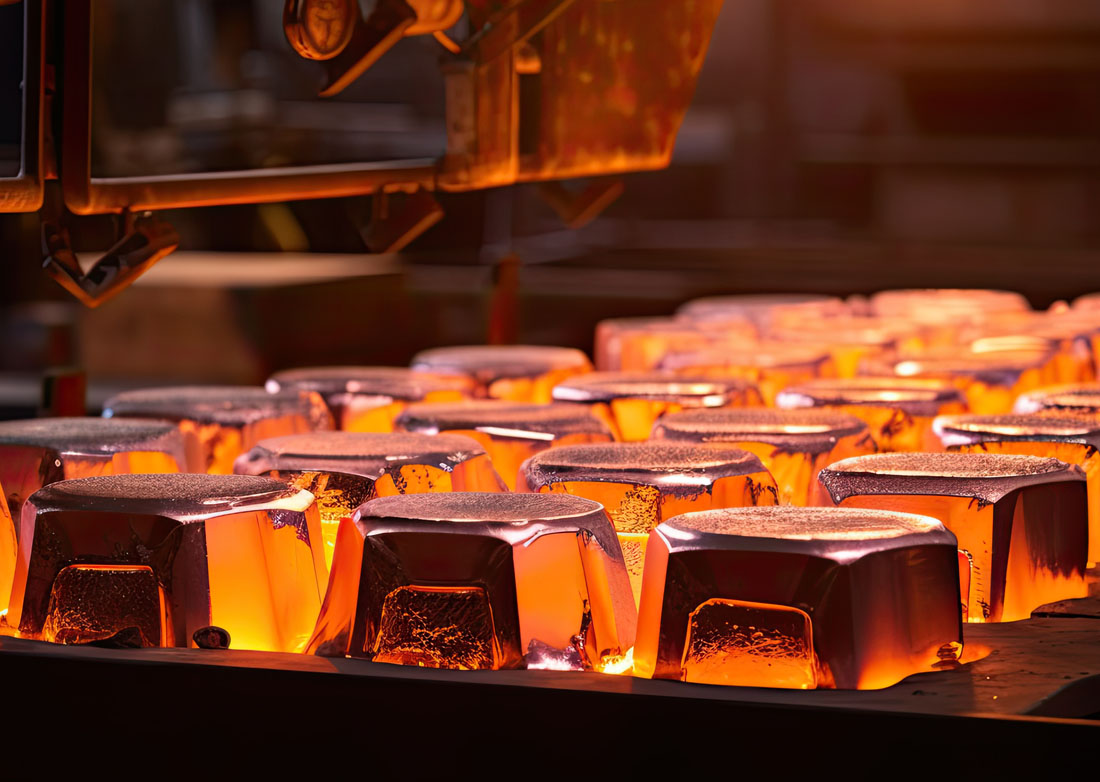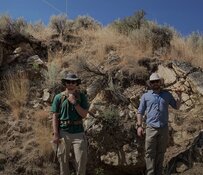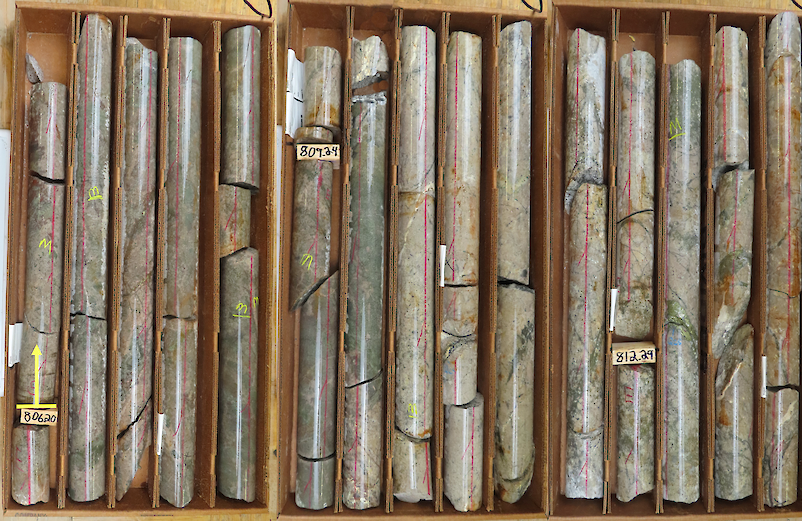The Gold Report: The prices of gold and silver soared after 2008, suggesting a flight to safety by investors. What does the recent volatility in gold from $1,250/ounce ($1,250/oz) to $1,325/oz and now down to near $1,300 oz indicate?
Thomas Schuster: Gold is naturally volatile and reacts constantly to positive and negative market stimuli. I don't believe that the recent uptick in the gold price is comparable to the start of the gold run that occurred after the financial crisis in 2008.
"Integra Gold Corp. has the high-grade Lamaque project in Val-d'Or in Quebec."
I look at how producers are doing. Average gold grades are lower, costs are higher, and overall production from the majors is declining. Gold reserves need to be replaced with quality ounces. I believe the gold price is finding a new base and will trend upward over the coming years. I'm bullish on gold.
TGR: The tremendous rise in the equities markets, which shows no sign of ending, has not benefitted gold and silver stocks. Why not?
TS: People tend to invest in trends. The general market trend has been rising, so investors have been chasing that trend and making money off it. On the flip side, the mining markets have been trending downward for years, so unless you have speculated on the dark side, it has been a difficult time for mining investors. When we start to see a steady uptrend in the mining market, I believe it will come back with a vengeance. Long and deep downturns are usually followed by spectacular upturns.
TGR: The bear market in gold and silver equities goes back to April 2011. When can we expect this sustained upturn?
TS: I think we're currently in a holding pattern. The gold price has been fluctuating around $1,300/oz, and it's now summer. Sell in May and go away, as the saying goes. Brokers are looking forward to the fall and a better investment climate then.
TGR: For 20 years, we've had the Internet, which has ushered in a 24/7/365 news cycle. So isn't it odd that the mining industry continues to operate on the basis that nothing significant can be expected in summer?
TS: Well, a great deal of exploration occurs in the summer. While investors take their holidays, the geologists are out in the field, spending money that was invested in their companies in the winter and spring. Typically mining stocks don't respond to news in the summer unless something significant is released. We tend to get more news flow in fall after the field season, and that's when people see opportunities to invest. That's also when investors tend to be more receptive to additional financings.
TGR: Should investors make decisions based on an assumed future gold price of roughly $1,250/oz, or is it now reasonable to invest based on the assumption of significantly higher prices?
TS: That depends entirely on their investment philosophy. If investors look to exploit volatility and short-term trends, they should examine current gold prices and market sentiment. However, longer-term investors should examine longer-term price forecasts. For instance, if they want to invest in a company with a two- to three-year path to production, they should look to what gold will be worth when that company begins producing.
TGR: What's your investment philosophy?
TS: I'm a longer-term investor, so I consider the longer-term trends. It's much more difficult to predict short-term volatility. I like to identify good companies with a good core asset. As the company advances that asset, it should gain in value.
TGR: In today's market, what are the qualities that distinguish those mining companies that are poised for success?
TS: Good management is always a key factor. These management teams find projects that have the right risk/reward ratio. Whether it means finding projects close to infrastructure in stable, mining-friendly jurisdictions or finding projects with the potential for tremendous discoveries in currently out-of-favor jurisdictions, good management will know what works in different market conditions.
TGR: Must good management always include executives who have hit home runs in the past?
TS: Not necessarily. You just need to identify smart people who can recognize and exploit opportunities. I went to school with a fellow called Patrick Anderson. He and his partner, Keith Barron, positioned themselves in a down market to acquire prime, underexplored ground in Ecuador. They had a pretty much unknown team, but they discovered the 13.7 million ounce (13.7 Moz) Fruta del Norte gold deposit, which was sold to Kinross Gold Corp. (K:TSX; KGC:NYSE) for $1 billion ($1B) in 2008.
TGR: How long should investors hold on to underperforming companies if their underlying fundamentals are good?
TS: I consider a one to three year period when determining whether investors are getting a proper return on investment in the junior market. If a company has met its benchmarks after one year and looks set to achieve its goals, you should hang on to it. And then you should continue to re-evaluate for up to three years, always considering what realistic potential gain can be had from this stock. When you get that, you should take your profit. You never lose money taking a profit.
TGR: You place a great deal of importance on the concept of enterprise value (EV). Could you explain this term and how it affects your valuation of mining companies?
TS: Because junior exploration companies don't make money, proper financial valuations are pretty much impossible, so we have to look at other ways to value them. EV looks at what the market is willing to pay for a company after its debts are paid and its cash position is taken into account. EV is often divided by the number of ounces or pounds of metal resources in the ground, and this number tells investors how the market values resources by one company as compared to its peers, and whether it is comparatively undervalued or overvalued.
Companies with low EVs are getting little value for their projects, and those on the cusp of making significant discoveries or publishing large resource estimates present good opportunities for investors.
TGR: Which are your favorite junior gold companies and why?
TS: I currently like one in Canada and one in Mexico. Integra Gold Corp. (ICG:TSX.V) has the high-grade Lamaque project in Val-d'Or in Quebec, right next to numerous past and currently producing mines. The company is fast-tracking this project, looking at production in three or four years.
Integra published a favorable preliminary economic assessment (PEA) in April: a pretax net present value (NPV) of $137 million ($137M) at a 5% discount rate with a 51% internal rate of return (IRR).
TGR: How much is the capital expense (capex)?
TS: Preproduction capital expenses are estimated to be about $65M. The capex is so low because of the four to six mills in the vicinity available to process the ore. Integra's management has been smart and assembled a top tier technical team. The senior VP is Hervé Thiboutot, who worked on Alamos Gold Inc.'s (AGI:TSX) Mulatos project and Goldcorp Inc.'s (G:TSX; GG:NYSE) Éléanore project. He has extensive experience bringing mines into production and he has now focused his attention on the Lamaque project.
TGR: Integra just closed a $10M private placement, which was heavily oversubscribed from the original offering of $4M. What does this tell you about the company?
TS: It's a vote of confidence. This money should take Integra to the point where it can make a decision on where to start developing an underground ramp for a more detailed exploration phase prior to production. The money will also go toward testing a few new exciting geophysical targets on the property.
TGR: Recent Lamaque assays include 14.2 grams per ton (14.2 g/t) gold over 11 meters (11m), 26.5 g/t gold over 6m and 38.2 g/t gold over 7m. Will the quality of the ore result in low production costs?
TS: The PEA estimates mine production of 505,600 oz gold at 8.19 g/t at an all-in cost of $756/oz. The key to keeping cash costs low is getting a high production rate from a number of mining faces and keeping dilution down.
TGR: Is Integra looking to greatly expand its resource through exploration?
TS: No, I don't think so. The past producing Sigma and the Lamaque mines, which are located right beside Integra's property, operated with only a few years of reserves ahead of them at any one time. But due to the nature of the deposit they stayed in production for 40 and 60 years, respectively. I believe Integra has a similar style of deposit on its property. Actually defining extensive mineable reserves on these kinds of high-grade, narrow-vein systems is expensive and not necessary. The company will need to go underground and start test mining in order to develop a couple of years of reserves and demonstrate that the ore structures continue to depth. That's the smart way to mine this type of deposit.
TGR: Which gold junior do you like in Mexico?
TS: Source Exploration Corp. (SOP:TSX.V). It owns Las Minas, which is an early-stage skarn-style project. It looks similar to projects in the Guerrero Gold Belt such as Goldcorp's Los Filos mine, Newstrike Capital Inc.'s (NES:TSX.V) Ana Paula project and Torex Gold Resources Inc.'s (TXG:TSX) 11 Moz Morelos project. The Las Minas area has seen historic work and very high grades but has never been properly explored. There is potential for another Torex-style discovery there, and that's what excites me.
TGR: You have written that skarn "is the source of Source's success." Could you elaborate on that?
TS: The Source property covers a large skarn system. The company has realized that historic mining in the area really only picked out the high-grade eyes within the project that were exposed in the valley floors. When Source ran geophysics over the property, it observed large areas of potential skarn mineralization that have not been tested yet. So the identification of this much wider skarn blanket in this area has been crucial to identifying exciting new targets.
TGR: How aggressive is the company going to be in exploration?
TS: Source intends to continue to drill to prove up potentially economic skarn mineralization at Las Minas. It may not find mineralization everywhere, but I expect it will probably define a number of high-grade areas that can be developed into quality resources. Source has already shown that the Las Minas, Santa Cruz and Eldorado targets are significantly mineralized and that's just one small portion of the property. I believe Source intends to move the drill across the valley floor to the other side and test to see if the mineralization continues there.
TGR: Source completed a $1.2M private placement in May. How does it stand for cash?
TS: At low share prices, you don't want to raise too much money. This company is frugal. Source's senior geologist, Matt Laird, is quite deliberate and methodical. He doesn't drill for the sake of drilling. He drills a few holes, looks at the results and then plans future holes based on those results. He has some really good targets to examine, and I think we should see some exciting results.
TGR: Let's talk about your favorite junior silver companies.
TS: I like Golden Arrow Resources Corp. (GRG:TSX.V; GAC:FSE; GARWF:OTCPK) and its Chinchillas silver project in Jujuy province, Argentina. It released a nice PEA in December: an after-tax NPV of $98.5M at an 8% discount rate with a 17.5% IRR. The preproduction capex is $202M, including a 25% contingency. And even without lead and zinc credits, the cash cost is $10.96 per silver ounce.
The company continues to hit more mineralization, for instance 43m at 359 g/t silver equivalent announced June 23. It's starting to look similar to a number of other deposits in the Bolivian tin-silver belt. So this thing could be much larger.
TGR: You wrote, "Recent drill results from 300m to as far as 1.5 kilometers south of current resources indicate that mineralization in the Chinchillas area is extensive and only partially delineated." But Golden Arrow doesn't have a lot of working capital, does it?
TS: It has been putting money toward exploration and its PEA. It has a tight share structure, and it's part of the Grosso Group, which has been very creative at raising money. So I think Golden Arrow should be able to raise the financing necessary to continue to advance the project.
TGR: Do you have another silver junior you want to discuss?
TS: I've written a report on Dolly Varden Silver Corp. (DV:TSX). It owns the Dolly Varden project in northern British Columbia. This is a small high-grade silver resource, close to infrastructure. Its timeline to production is two or three years, assuming it continues delineating the resources it has at the Torbrit mine, and at the North Star and Wolf deposits.
The company is also planning to test potential Eskay Creek-style exploration targets to the west of its Torbrit mine. Geological evidence suggests that the silver-rich mineralization representing the Dolly Varden mines were deposited along the margins of a much larger, untested volcanogenic massive sulphide (VMS) system. These are Eskay Creek lookalikes. The company is in the process of raising money and planning to drill a fence across the entire volcanic sequence. Success with the drill bit would create a lot of excitement in the market.
TGR: Now that the Supreme Court of Canada has granted title to Indian groups that can demonstrate continuous use of Crown land, can British Columbia still be considered a mining-friendly jurisdiction?
TS: British Columbia is one of the most highly regulated jurisdictions in Canada, but at the end of the day you can still go to sleep knowing you will own your project in the morning. Successful mining companies know that they must respectfully engage First Nations early on and build good relationships in order to foster mutual understanding and trust that will benefit all parties involved. The Supreme Court ruling re-enforces that reality and hopefully it will provide a road map for negotiating as opposed to litigating.
TGR: We're told that the mining industry hates uncertainty above all. When you consider this Supreme Court decision in light of the Canadian federal government's second rejection of Taseko Mines Ltd.'s (TKO:TSX; TGB:NYSE.MKT) Prosperity project, isn't it possible that the industry could sour on British Columbia and move wholesale to a friendlier jurisdiction like Mexico?
TS: Yes the industry hates uncertainty, but it also thrives on opportunity. Every jurisdiction presents its own unique challenges, even Mexico. Last October, Mexico approved a 7.5% mining tax royalty proposal and that has definitely chilled investment sentiment. Despite that, the country still provides junior explorers with excellent opportunities. Every jurisdiction has its warts, but as long as there is a clear process to production and security of tenure, the mining industry will work within that process to identify and develop the best deposits.
TGR: Quebec has a new Liberal government, replacing the Parti Québécois. What are the implications for the mining industry?
TS: The Liberal government is on record as being more mining friendly. The proof will be in the pudding.
TGR: Argentina, like Canada, has a federal system. How important is that to mining?
TS: A federal system is important to providing a unified mining code, but as in Canada, some Argentine provinces are more favorable toward mining than others. Lumina Copper Corp. (LCC:TSX), which owns the Taca Taca project in Salta province, just sold the project to First Quantum Minerals Ltd. (FM:TSX; FQM:LSE) for $470M. First Quantum has been actively diversifying its mining portfolio and has been very successful in higher-risk jurisdictions. Golden Arrow's Chinchillas project is in Jujuy province, which has a number of operating mines, and is quite friendly to mining.
Jurisdictions change and when they change favorably they provide great investment opportunities. I can remember when Colombia was a terrible place to work. Now, it is significantly better and subsequently many new discoveries have been made there. Argentina is not regarded very highly at the moment, but there are indications that the political climate could be improving. That sets the stage for opportunity.
TGR: Which specialty metal particularly interests you now?
TS: Niobium, which has a very good outlook. It's used in the form of ferroniobium to produce lighter, stronger steel. For example, $9 worth of niobium in a car reduces its total weight by 100 kilograms, increasing fuel efficiency by 5% and lowering CO2 emissions. The U.S. doesn't produce any. A Roskill Global Commodities Market Report estimates a compound annual ferroniobium growth rate of 3.74–7.32% through 2017.
TGR: Only three mines produce niobium, and 95% comes from Brazil and 5% from Canada. Can these mines meet short-term niobium demand?
TS: They could meet near-term demand, but the issue is diversity of supply. With 90% produced by one company in Brazil, any kind of natural disaster, strike or governmental disruption could cause quite a hiccup in the market. As the U.S. considers niobium a strategic metal, it would prefer some American production.
TGR: That's one specific project you're talking about, right?
TS: Yes, NioCorp Developments Ltd.'s (NB:TSX.V) Elk Creek project in Nebraska. It's an underground deposit with a production profile quite similar to IAMGOLD Corp.'s (IMG:TSX; IAG:NYSE) Niobec mine in Quebec. Last year, including sustaining costs, Niobec produced almost half of IAMGOLD's earnings.
TGR: NioCorp's management has hit a homerun in the past, correct?
TS: CEO Mark Smith was the CEO of Molycorp Inc. (MCP:NYSE), which went from a private asset with a market cap below $100M to a market cap as high as $6B. He helped develop the vertically integrated Molycorp operation. He sees the opportunity to develop Elk Creek in the same manner, perhaps not to the same degree, but there is a tremendous opportunity there.
TGR: The company announced June 26 assays including 73m grading 0.68% niobium. Is that a good result?
TS: That's a very nice result. I think 0.41% is the sort of average grade Niobec is currently mining. Generally, anything above 0.5% niobium pentoxide is a very good grade. Companhia Brasileira de Metalurgia e Mineracão (CBMM) in Brazil is over 2%. But the key for NioCorp will be recoveries. Typically, niobium recovery is only 50–60%, but NioCorp might do better.
TGR: When can we expect an Elk Creek feasibility study?
TS: I believe NioCorp plans to release one in the first part of 2015.
TGR: If this feasibility study is good, would you expect an upward rerating of this stock?
TS: I would think so. Keep in mind that, unlike gold, silver and copper, there is no open market for strategic metals. Producers need offtake buyers, in this case, steel companies. If they see a positive feasibility study that shows high returns on investment, they will consider investing to bring Elk Creek into production to secure supply for themselves.
TGR: What are the reasons for long-term investors to be optimistic about gold and silver stocks?
TS: I've been through a number of cycles, and nasty downturns are always followed by exciting turnarounds. People will always need metals, and metals are not renewable. I read an interesting quote recently, "Mines are value destroyers," referring to the fact that the metals need to be replaced as they are blasted from the ground. New sources must be found to replace what's being mined. The only way to find these new metal sources is through extensive exploration, and that requires risk capital. So we must wait for favorable market conditions to return. In the meantime, there are some great opportunities out there you can invest in now to get yourself in ahead of the rush.
TGR: Thomas, thank you for your time and your insights.
Thomas Schuster is a consulting mining analyst in Vancouver. He holds a Bachelor of Science in geological sciences from the University of Toronto and began his career in the Timmins Camp in Ontario. A reporter at the Northern Miner for seven years, he produces an equity research report, "Rocks To Riches," which is distributed to industry brokerage firms.
Read what other experts are saying about:
Want to read more Gold Report interviews like this? Sign up for our free e-newsletter, and you'll learn when new articles have been published. To see recent interviews with industry analysts and commentators, visit our Streetwise Interviews page.
DISCLOSURE:
1) Kevin Michael Grace conducted this interview for Streetwise Reports LLC, publisher of The Gold Report, The Energy Report, The Life Sciences Report and The Mining Report, and provides services to Streetwise Reports as an independent contractor. He owns, or his family owns, shares of the following companies mentioned in this interview: None.
2) The following companies mentioned in the interview are sponsors of Streetwise Reports: Integra Gold Corp. Goldcorp Inc. is not afficiated with Streetwise Reports. Streetwise Reports does not accept stock in exchange for its services.
3) Thomas Schuster: I own, or my family owns, shares of the following companies mentioned in this interview: NioCorp Developments Ltd., Golden Arrow Resources Corp. and Source Exploration Corp. I personally am, or my family is, paid by the following companies mentioned in this interview: All companies mentioned. My company has a financial relationship with the following companies mentioned in this interview: None. I was not paid by Streetwise Reports for participating in this interview. Comments and opinions expressed are my own comments and opinions. I had the opportunity to review the interview for accuracy as of the date of the interview and am responsible for the content of the interview.
4) Interviews are edited for clarity. Streetwise Reports does not make editorial comments or change experts' statements without their consent.
5) The interview does not constitute investment advice. Each reader is encouraged to consult with his or her individual financial professional and any action a reader takes as a result of information presented here is his or her own responsibility. By opening this page, each reader accepts and agrees to Streetwise Reports' terms of use and full legal disclaimer.
6) From time to time, Streetwise Reports LLC and its directors, officers, employees or members of their families, as well as persons interviewed for articles and interviews on the site, may have a long or short position in securities mentioned. Directors, officers, employees or members of their families are prohibited from making purchases and/or sales of those securities in the open market or otherwise during the up-to-four-week interval from the time of the interview until after it publishes.




































